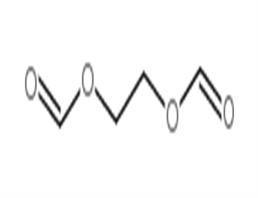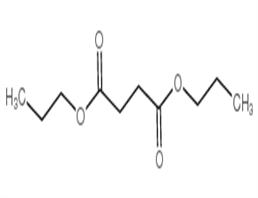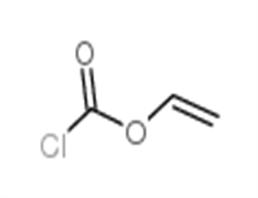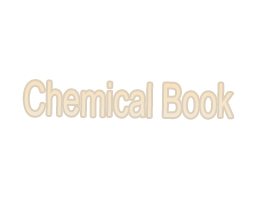
Tobramycin
| Price | $7 |
| Package | 1KG |
| Min. Order: | 1KG |
| Supply Ability: | 100kg |
| Update Time: | 2020-01-03 |
Product Details
| Product Name: Tobramycin | CAS No.: 32986-56-4 |
| Min. Order: 1KG | Purity: 99% |
| Supply Ability: 100kg | Release date: 2020/01/03 |
| Name : Judy |
Judy@coreychem.com
Product Name: Tobramycin
Synonyms: Tobramycin, Free Base - CAS 32986-56-4 - Calbiochem;Tobramycin, potency: ≥900μG/mg,98%;1-epitobramycin;3’-deoxykanamycinb;4-[2,6-diamino-2,3,6-trideoxy-alpha-d-glycopyranosyl]-6-[3-amino-3-deoxy-alpha;6-trideoxy-alpha-d-ribo-hexopyranosyl-(1-4))-2-deoxy-;d-6-trideoxy-alpha-d-ribohexopyranosyl-(1-6))-2-deoxy;d-6-tyrideoxy-alpha-d-ribohexopyranosyl-(1-6))-2-deoxy
CAS: 32986-56-4
MF: C18H37N5O9
MW: 467.51
EINECS: 251-322-5
Product Categories: -;Oligosaccharide Compounds;Biochemistry;Intermediates & Fine Chemicals;Aminoglycosides (Antibiotics for Research and Experimental Use);Antibiotics for Research and Experimental Use;Oligosaccharides;Pharmaceuticals;Peptide Synthesis/Antibiotics;API;TOBI;antibiotic;Inhibitors
Mol File: 32986-56-4.mol
Tobramycin Structure
Tobramycin Chemical Properties
Melting point 178 °C
alpha D20 +129° (c = 1 in water)
Boiling point 570.01°C (rough estimate)
density 1.3458 (rough estimate)
refractive index 143 ° (C=4, H2O)
storage temp. 2-8°C
solubility H2O: 50 mg/mL, clear, faintly yellow
form White to off-white solid
pka pKa 6.7 (Uncertain);8.3 (Uncertain);9.9 (Uncertain)
color white to off-white
Water Solubility Soluble in water
Merck 14,9490
BRN 1357507
Safety Information
Hazard Codes Xi
Risk Statements 36/37/38
Safety Statements 26-37/39
WGK Germany 2
RTECS WK2100000
F 3-10
HS Code 29419090
Hazardous Substances Data 32986-56-4(Hazardous Substances Data)
Toxicity LD50 in mice, rats (mg/kg): 441, 969 s.c. (Welles)
MSDS Information
Provider Language
Tobramycin English
SigmaAldrich English
Tobramycin Usage And Synthesis
Chemical Properties White or almost white powder.
Uses antibacterial, inhibits protein synthesis
Uses Antihypertensive
Uses Tobramycin is an aminoglycoside antibiotic.
Uses Single factor antibiotic comprising about 10% of nebramycin, the aminoglycosidic antibiotic complex produced by Streptomyces tenebrarius. Antibacterial
Definition ChEBI: A amino cyclitol glycoside that is kanamycin B lacking the 3-hydroxy substituent from the 2,6-diaminoglucose ring.
Antimicrobial activity In-vitro activity against Ps. aeruginosa is usually somewhat greater than that of gentamicin; against other organisms activity is similar or a little lower. Other Pseudomonas species are generally resistant, as are streptococci and most anaerobic bacteria. Other organisms usually susceptible in vitro include Acinetobacter, Legionella and Yersinia spp. Alkaligenes, Flavobacterium spp. and Mycobacterium spp. are resistant. It exhibits bactericidal activity at concentrations close to the MIC and bactericidal synergy typical of aminoglycosides in combination with penicillins or cephalosporins.
Acquired resistance It is inactivated by many aminoglycoside-modifying enzymes that inactivate gentamicin. However, AAC(3′)-I does not confer tobramycin resistance and AAC(3′)-II confers a lower degree of tobramycin resistance than of gentamicin resistance. Conversely, ANT(4′) confers tobramycin but not gentamicin resistance, as do some types of AAC(6′). Overproduction of APH(3′), conferring a low degree of resistance to tobramycin (MIC 8 mg/L), but not gentamicin (MIC 2 mg/L), was ascribed to ‘trapping’ rather than phosphorylation.
Resistance rates are generally similar to those of gentamicin, although they may vary locally because of the prevalence of particular enzyme types.
Pharmacokinetics Cmax 80 mg intramuscular: 3–4 mg/L after 30 min
1 mg/kg intravenous: 6–7 mg/L after 30 min
5 mg/kg: >10 mg/L after 1 h
Plasma half-life: 1.5–3 h
Volume of distribution: c. 0.25 L/kg
Plasma protein binding: <30%
The pharmacokinetic behavior after systemic administration closely resembles that of gentamicin. In patients treated for prolonged periods with 2.5 mg/kg intravenously every 12 h, average peak steady-state values were 6.5 mg/L after 30 weeks and 7.1 mg/L after 40 weeks. Continuous intravenous infusion of 6.6 mg/h and 30 mg/h produced steady-state concentrations of 1 and 3.5–4.5 mg/L, respectively. Higher concentrations (10–12 mg/L) have been obtained by bolus injection over about 3 min. Peak concentrations of around 50 mg/L have been reported in cystic fibrosis patients given 9 mg/kg once daily. Ten minutes after a 300 mg dose of tobramycin solution for inhalation, mean concentration of drug in the sputum of cystic fibrosis patients was 1.2 mg/g and ranged from 0.04 to 1.4 mg/g. The systemic availability of nebulized drug is very variable (6–27%). In general, the concentration found in the sputum of cystic fibrosis patients is high when administered by inhalation, but varies widely depending on individual airway pathology and nebulizer efficiency.
In the neonate, peak plasma concentrations of 4–6 mg/L have been found 0.5–1 h after doses of 2 mg/kg. Mean plasma elimination half-lives of 4.6–8.7 h were inversely proportional to the birth weight and creatinine clearance. The half-life was found to be initially extremely variable (3–17 h) in infants weighing 2.5 kg at birth, but considerably more stable (4–8 h) at the end of therapy 6–9 days later.
β-Lactam inactivation
In common with other aminoglycosides, tobramycin interacts with certain β-lactam agents, but is said to be stable in the presence of ceftazidime, imipenem and aztreonam. Of the penicillins tested, piperacillin caused least inactivation in vitro.
Distribution
The volume of distribution slightly exceeds the extracellular water volume; it increases in patients with ascites, and is relatively smaller in morbidly obese patients. In tracheostomized or intubated patients given a loading dose of 1 mg/kg and then intravenous infusions every 8 h of 2–3.5 mg/kg, average concentrations in the bronchial secretions were 0.7 mg/L with a mean secretion:serum ratio of 0.18. In patients with cystic fibrosis receiving 10 mg/kg of the drug per day, the bronchial secretions may contain 2 mg/L or more.
Concentrations are low in peritoneal fluid but can rise to 60% of the plasma concentration in peritonitis and in synovial fluid. Tobramycin crosses the placenta, and concentrations of 0.5 mg/L have been found in the fetal serum when the mother was receiving a dose of 2 mg/kg. Penetration into the CSF resembles that of gentamicin.
Excretion
It is eliminated in the glomerular filtrate and is unaffected by probenecid. Renal clearance is 90 mL/min. About 60% of the administered dose is recovered from the urine over the first 10 h, producing urinary concentrations after a dose of 80 mg of 90–500 mg/L over the first 3 h. The nature of the extrarenal disposal of the remaining 40% of the drug has not been established. The total body clearance is increased in patients with cystic fibrosis and the plasma half-life is shorter, which may necessitate higher dosage (15 mg/kg per day) for optimum blood concentrations. Renal clearance is increased in younger burn patients. In patients with impaired renal function, urinary concentrations of the drug are depressed and the plasma half-life prolonged in proportion to the rise in serum creatinine, reaching 6–8 h at a creatinine concentration of 350 μmol/L. Dosage in patients with impaired renal function may be based on the procedures used for gentamicin since behavior of the two drugs is virtually identical. About 70% of the drug is removed by hemodialysis over 12 h, but the efficiency of different dialyzers varies markedly.
Clinical Use Severe infections caused by susceptible micro-organisms Ps. aeruginosa infections, including chronic pulmonary infections in cystic fibrosis (administration by injection or nebulizer)
For practical purposes use is identical to that of gentamicin, except possibly for Pseudomonas infection, where it has somewhat greater activity against gentamicin-susceptible and some gentamicin-resistant strains. Its value as a substitute for gentamicin in the speculative treatment of severe undiagnosed infection is offset by its lower activity against other organisms that may be implicated.
It has been used extensively to treat Ps. aeruginosa infections in patients with cystic fibrosis.
Side effects Ototoxicity
The effect is predominantly on the auditory branch of the eighth nerve; vestibular function is seldom affected. Experimental evidence suggests that comparable effects on cochlear electrophysiology and histology require doses about twice those of gentamicin. In patients, electrocochleography has shown an immediate and dramatic reduction of cochlear activity when the serum tobramycin concentration exceeded 8–10 mg/L, but there were no associated symptoms and function recovered fully as the drug was eliminated. Clinical ototoxicity is rare and most likely to be seen in patients with renal impairment, or treated concurrently or sequentially with other potentially ototoxic agents.
Nephrotoxicity
Renal impairment with proteinuria, excretion of granular casts, oliguria and rise of serum creatinine have been noted in 1–2% of patients. Some evidence of nephrotoxicity has been found in about 10% of patients, depending on the sensitivity of the tests employed. In patients treated with a 120 mg loading dose and 80 mg every 8 h, renal enzyme excretion increased and there was a small but significant reduction in chrome-EDTA clearance even when the clinical condition improved. It has been suggested that intermittent dosage with large but infrequent plasma peaks may be less toxic than, and as efficacious as, continuous dosing. Tobramycin appears to be less nephrotoxic than gentamicin in critically ill patients.
The likelihood of toxicity is thought to increase with preexisting renal impairment and higher or more prolonged dosage, but in a comparison of patients treated with 8 mg/kg per day for Pseudomonas endocarditis with those treated with 3 mg/kg per day for Gram-negative sepsis there was no evidence of renal impairment in either group. Although there was audiological evidence of high-frequency loss in some patients receiving the higher dosage, there was no sustained loss of conversational hearing. There seems to be no significant effect of age: in patients aged 20–39 years the mean elimination half-life of the drug at the end of treatment was 2.3 h while in those aged 60–79 years it was 2.4 h. Evidence of renal toxicity may be found in 20% of severely ill patients.
Other reactions
Other toxic manifestations are rare. Local reactions sometimes occur at the site of injection. Rashes and eosinophilia in the absence of other allergic manifestations are seen. Voice alterations and tinnitus were rare in cystic fibrosis patients receiving tobramycin by inhalation. Increased transaminase levels may occur in the absence of other evidence of hepatic derangement.
Company Profile Introduction
Established in 2014,Career Henan Chemical Co. is a manufacturerspecializing in the sale of fine chemicals.
Mainly deals in the sales of:
Pharmaceutical intermediates
OLED intermediates:
Pharmaceutical intermediates;
OLED intermediates;
You may like
Recommended supplier
| Product name | Price | Suppliers | Update time | |
|---|---|---|---|---|
| $150.00/1kg |
VIP1Y
|
Hebei Zhuanglai Chemical Trading Co Ltd
|
2024-12-05 | |
| $1.00/1kg |
VIP6Y
|
Hebei Weibang Biotechnology Co., Ltd
|
2024-11-20 | |
| $33.00/50mg |
VIP3Y
|
TargetMol Chemicals Inc.
|
2024-11-19 | |
| $1.90/1KG |
VIP4Y
|
Hebei Chuanghai Biotechnology Co,.LTD
|
2024-08-22 | |
| $0.00/1KG |
VIP1Y
|
Hangzhou Hyper Chemicals Limited
|
2024-06-07 | |
| $1.00/1g |
VIP1Y
|
Apeloa production Co.,Limited
|
2024-05-30 | |
| $0.00/1kg |
VIP1Y
|
Shaanxi TNJONE Pharmaceutical Co., Ltd
|
2024-04-07 | |
| $0.00/25KG |
VIP5Y
|
Hebei Mojin Biotechnology Co., Ltd
|
2023-08-30 | |
| $100.00/1kg |
Zibo Wei Bin Import & Export Trade Co. Ltd.
|
2023-07-11 | ||
| $0.00/1kg |
VIP3Y
|
Wuhan Senwayer Century Chemical Co.,Ltd
|
2023-02-08 |
- Since: 2014-12-17
- Address: Room 702, Floor 7, Building 10, National University Science Park, High-Tech Zone, Zhengzhou City, H
INQUIRY









 China
China